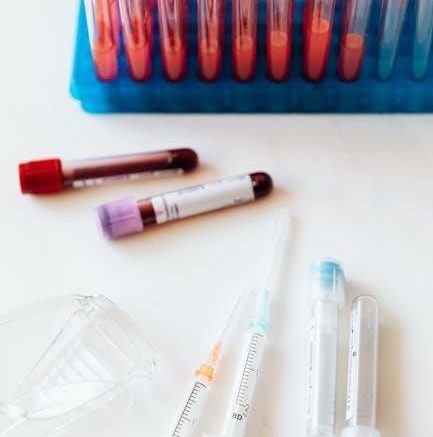The CSWIP 3.2.2 certification is a globally recognized qualification for Senior Welding Inspectors, focusing on advanced welding inspection, leadership, and technical expertise in ensuring weld quality and safety.
1.1 Overview of the CSWIP 3.2.2 Course
The CSWIP 3.2.2 course is a comprehensive program designed to equip candidates with advanced knowledge and skills in welding inspection. It focuses on both theoretical and practical aspects, ensuring participants can effectively manage and inspect welding operations. The course is tailored for individuals aiming to become Senior Welding Inspectors, covering topics like welding processes, NDT methods, and quality control. It emphasizes defect identification, documentation, and compliance with industry standards. The program also includes hands-on training to enhance real-world application of concepts. By completing this course, candidates gain the expertise needed to excel in welding inspection roles, making it a vital step toward achieving the CSWIP 3.2.2 certification.
1.2 Importance of the Senior Welding Inspector Qualification
The Senior Welding Inspector qualification is crucial for ensuring high standards in welding operations, making it indispensable in industries like construction, aerospace, and automotive. It signifies expertise in quality assurance, defect identification, and compliance with international standards, enhancing credibility and trust in one’s work. This certification opens doors to leadership roles, enabling professionals to manage complex projects and teams effectively. It also leads to career advancement, with opportunities for higher salaries and greater responsibility. By ensuring adherence to safety protocols and industry regulations, Senior Welding Inspectors play a vital role in preventing structural failures and maintaining public safety. This qualification is a cornerstone of professionalism in welding inspection.

Key Concepts and Topics Covered
This section explores welding inspection procedures, metallurgy, NDT methods, weld discontinuities, and relevant codes and standards, forming the core of the CSWIP 3.2.2 curriculum.
2.1 Welding Inspection Contents and Procedures

This section outlines the fundamental aspects of welding inspection, including pre-weld, during-weld, and post-weld checks. It covers visual inspection techniques, measurement of weld dimensions, and verification of weld quality against specified standards. The PDF study material emphasizes understanding weld defects, their causes, and corrective actions. It also details documentation requirements, such as inspection reports and test records. Practical examples and case studies are included to illustrate real-world application of inspection procedures, ensuring candidates can apply theoretical knowledge effectively during exams and in professional roles. Mastery of these procedures is critical for achieving CSWIP 3.2.2 certification and performing inspections accurately.
2.2 Duties and Responsibilities of a Senior Welding Inspector
The Senior Welding Inspector plays a pivotal role in ensuring welding operations meet quality and safety standards. Their primary duties include conducting thorough inspections of welds, interpreting welding specifications, and verifying compliance with codes and standards. They are responsible for supervising junior inspectors, reviewing inspection reports, and ensuring corrective actions are implemented. Additionally, they perform audits, witness testing, and provide technical guidance to welding personnel. The role requires strong communication skills to liaise with clients, contractors, and stakeholders. A Senior Inspector must also stay updated on industry standards and best practices. Mastery of these responsibilities is essential for maintaining quality control and achieving certification.
2.3 Essential Terms and Definitions in Welding Inspection
Understanding key terms is crucial for mastering welding inspection. A weld is a junction where two metal pieces are fused together. Defects refer to discontinuities that compromise weld integrity, such as porosity or slag inclusion. Porosity involves gas bubbles trapped in the weld, while slag inclusion occurs when slag particles are embedded. Lack of fusion indicates inadequate joining of base metals. Non-destructive testing (NDT) includes methods like radiography, ultrasonic testing, and magnetic particle testing to assess weld quality without causing damage. These terms are fundamental for interpreting standards, identifying issues, and ensuring compliance with welding codes. Clear definitions are vital for effective communication and accurate inspection results.
2.4 Planning and Management in Welding Inspection
Effective planning and management are critical in welding inspection to ensure quality, safety, and efficiency. A well-structured plan outlines inspection schedules, procedures, and resource allocation. It involves defining clear objectives, such as identifying defects or ensuring compliance with standards. Prioritizing tasks based on risk assessment and criticality helps optimize workflows. Time management is essential to meet project deadlines without compromising inspection thoroughness. Regular reviews and updates to the plan adapt to changing project requirements. Proper documentation and communication among team members ensure accountability and consistency. Strong organizational skills and attention to detail are key to successful planning and management in welding inspection, directly impacting the reliability of the final product.

Study Materials and Resources
Key resources include detailed training notes, technical guides, and reference materials essential for understanding inspection techniques and prepares candidates for the certification exam effectively.
3.1 Recommended Study Materials for CSWIP 3.2.2
The CSWIP 3.2.2 study material PDF includes comprehensive resources such as detailed training notes, technical guides, and reference books. Key materials include TWI tuition notes, welding standards (ASME, ISO), and practical inspection handbooks. These resources cover welding processes, defect analysis, and quality control. Additionally, study guides, sample questions, and case studies are essential for exam preparation. Candidates are advised to use official CSWIP study materials and supplementary books on welding inspection. Online platforms and forums also offer valuable resources, including practice exams and study aids. Combining these materials ensures a well-rounded understanding of the syllabus and enhances readiness for the certification exam.

3.2 TWI Tuition Notes for 3.2U Course
TWI tuition notes for the 3.2U course are a cornerstone of CSWIP 3.2.2 preparation. These notes are specifically designed to align with the certification syllabus, covering critical topics like welding processes, inspection techniques, and defect assessment. The materials are structured to enhance understanding of welding principles, NDT methods, and quality control. They include detailed explanations, diagrams, and practical examples to aid learning. Candidates can access these notes through TWI’s official website or authorized training partners. Regularly reviewing and applying the concepts in these notes is essential for mastering the course content and achieving success in the CSWIP 3.2.2 exam.

3.3 Radiographic Interpretation Resources
Radiographic interpretation is a critical skill for CSWIP 3.2.2 candidates, as it involves analyzing weld quality using X-rays or gamma rays. Key resources include textbooks like Radiographic Testing Handbook and online guides such as Welding Inspection and Quality Control; These materials provide detailed insights into defect identification, film interpretation, and radiographic testing standards. Additional resources like ASTM and ISO standards are essential for understanding specifications. Online platforms offer practice tests and sample radiographs to enhance interpretation skills. Utilizing these resources ensures candidates can accurately assess weld quality, a key requirement for passing the CSWIP 3.2.2 exam and excelling as a Senior Welding Inspector.
3.4 Where to Find Free CSWIP 3.2.2 PDF Downloads
Accessing free CSWIP 3.2.2 PDF downloads can be challenging, but several resources may help. The TWI website and IIW offer some free study materials, though they may not cover the entire syllabus. Online forums like Reddit’s welding communities or LinkedIn groups often share PDF resources. Google searches using specific keywords like “CSWIP 3.2.2 study material PDF free download” may yield results, but be cautious about reliability. Additionally, some academic institutions and libraries provide free access to relevant welding inspection documents. Always verify the authenticity and completeness of free materials, as they may lack critical content. Prioritize official study guides for comprehensive preparation.

Exam Preparation and Strategy
Develop a structured study plan, focusing on key topics like welding inspection procedures and defect assessment. Understand the exam format and practice with past papers.
4.1 Developing a Comprehensive Study Plan
Creating a detailed study plan is essential for success in the CSWIP 3.2.2 exam. Start by identifying key topics and allocating time for each, ensuring coverage of welding inspection procedures, defect assessment, and relevant standards. Prioritize areas where you feel less confident and dedicate more time to those sections. Incorporate regular practice with past exam questions to familiarize yourself with the format and timing. Use the TWI tuition notes and recommended study materials as primary resources. Schedule regular breaks to maintain focus and avoid burnout. Review and adjust your plan weekly to track progress and stay on course. Consistency and organization are vital for effective preparation.
4.2 Understanding the Exam Format and Syllabus
The CSWIP 3.2.2 exam consists of multiple-choice questions divided into two parts: general theory and specific syllabus content. Candidates have three hours to complete the exam, with questions covering welding processes, inspection techniques, and quality control. Familiarize yourself with the syllabus to understand the weighting of topics like NDT methods, weld discontinuities, and welding procedures. Reviewing past exam papers and study materials will help you grasp the question style and focus on key areas. Understanding the exam format ensures you allocate time effectively during the test, improving your chances of success. Prioritize topics with higher weightage for better preparation.
4.3 Practical Tips for Success in the CSWIP 3.2.2 Exam
To excel in the CSWIP 3.2.2 exam, adopt a structured study approach. Allocate time for each topic based on its syllabus weightage and focus on weak areas. Practice with past exam papers to familiarize yourself with the question format. Use flashcards for key terms and concepts. Engage in active learning by summarizing notes and teaching others. Ensure you understand welding inspection principles rather than memorizing. Utilize visual aids like diagrams to reinforce learning. Join study groups or forums for discussion and clarification. Stay calm during the exam, read questions carefully, and manage your time effectively. Regular breaks during study sessions can improve retention and focus.

Benefits of CSWIP 3.2.2 Certification
CSWIP 3.2.2 certification offers significant career advancement, higher earning potential, and enhanced professional credibility in the specialized field of welding inspection and quality assurance practices.
5.1 Career Advancement Opportunities
Obtaining the CSWIP 3.2.2 certification significantly enhances career prospects in welding inspection and related fields. It positions individuals as highly skilled professionals, opening doors to roles such as Senior Welding Inspector, Quality Control Manager, or Welding Engineer. The certification is recognized globally, making it easier to secure jobs in industries like oil and gas, aerospace, and construction. Certified professionals often experience faster career progression and access to leadership roles. Additionally, the certification can lead to higher salary potential and greater job security. It also prepares individuals for more advanced certifications, further solidifying their expertise and marketability in the industry.
5.2 Enhanced Credibility and Industry Recognition
The CSWIP 3.2.2 certification significantly boosts an individual’s credibility and recognition within the welding and inspection industry. It demonstrates a high level of expertise and commitment to quality, making certified professionals more trustworthy to employers and clients. The certification is widely recognized internationally, ensuring that holders are valued across various sectors. It also enhances professional reputation, as it signifies adherence to global standards and best practices in welding inspection. By achieving this qualification, individuals gain respect and confidence from stakeholders, strengthening their position in the industry. This recognition often leads to increased opportunities and a stronger professional network.

Additional Resources and Support
Additional resources and support are available to aid CSWIP 3.2.2 preparation, including study guides, tutorials, and online forums for knowledge sharing and professional development.
6.1 Online Platforms for Further Study
Several online platforms offer comprehensive resources for CSWIP 3.2.2 preparation, including study guides, video tutorials, and practice exams. The Welding Institute (TWI) provides official study materials, while platforms like AWS and LinkedIn offer additional resources. Websites like Scribd and ResearchGate host various CSWIP 3.2.2 study material PDFs, which can be downloaded for free or at a nominal cost. Additionally, online forums and discussion groups dedicated to welding inspection allow candidates to interact with professionals and gain insights. These platforms are invaluable for self-study and supplement traditional learning methods, ensuring candidates are well-prepared for the certification exam.
6.2 Joining Study Groups and Forums
Joining study groups and forums is an excellent way to connect with fellow candidates and experienced professionals in welding inspection. Platforms like Reddit, LinkedIn, and specialized welding forums host active communities discussing CSWIP 3.2.2 topics. These groups often share study materials, including CSWIP 3.2.2 study material PDFs, and provide valuable insights. Participating in discussions can help clarify doubts, gain practical advice, and stay updated on industry trends. Additionally, many forums offer access to practice exams and real-world case studies. Engaging with these communities enhances learning and builds a network of professionals who can support you throughout your certification journey and beyond.

Obtaining the CSWIP 3.2.2 certification is a significant achievement, offering career growth and enhanced expertise in welding inspection. Utilize study materials, including CSWIP 3.2.2 study material PDFs, to excel. Continuous learning and professional networking will ensure long-term success in this dynamic field.
7.1 Final Tips for Achieving Certification
To successfully obtain the CSWIP 3.2.2 certification, thoroughly review the study materials, including the CSWIP 3.2.2 study material PDF. Focus on understanding key concepts like welding inspection procedures, terminology, and standards. Practice with mock exams to familiarize yourself with the format. Allocate dedicated time for revision and ensure a well-structured study plan. Seek clarification on doubts through forums or expert guidance. Gain practical insights by reviewing case studies and real-world applications. Stay disciplined, and avoid last-minute cramming. By consistently applying effort and leveraging available resources, you can confidently achieve certification and advance your career in welding inspection.
7.2 The Value of Continuous Learning in Welding Inspection
Continuous learning is essential for maintaining proficiency and staying updated with evolving industry standards in welding inspection. The field is dynamic, with advancements in technologies and methodologies regularly emerging. By engaging in ongoing education, professionals can enhance their expertise and adapt to new challenges. Leveraging resources like the CSWIP 3.2.2 study material PDF ensures access to the latest knowledge. Continuous learning also fosters problem-solving skills and critical thinking, which are vital for complex inspection scenarios. Investing time in professional development not only boosts career prospects but also contributes to personal growth and credibility in the industry. It ensures inspectors remain competent and adaptable to industry demands.
